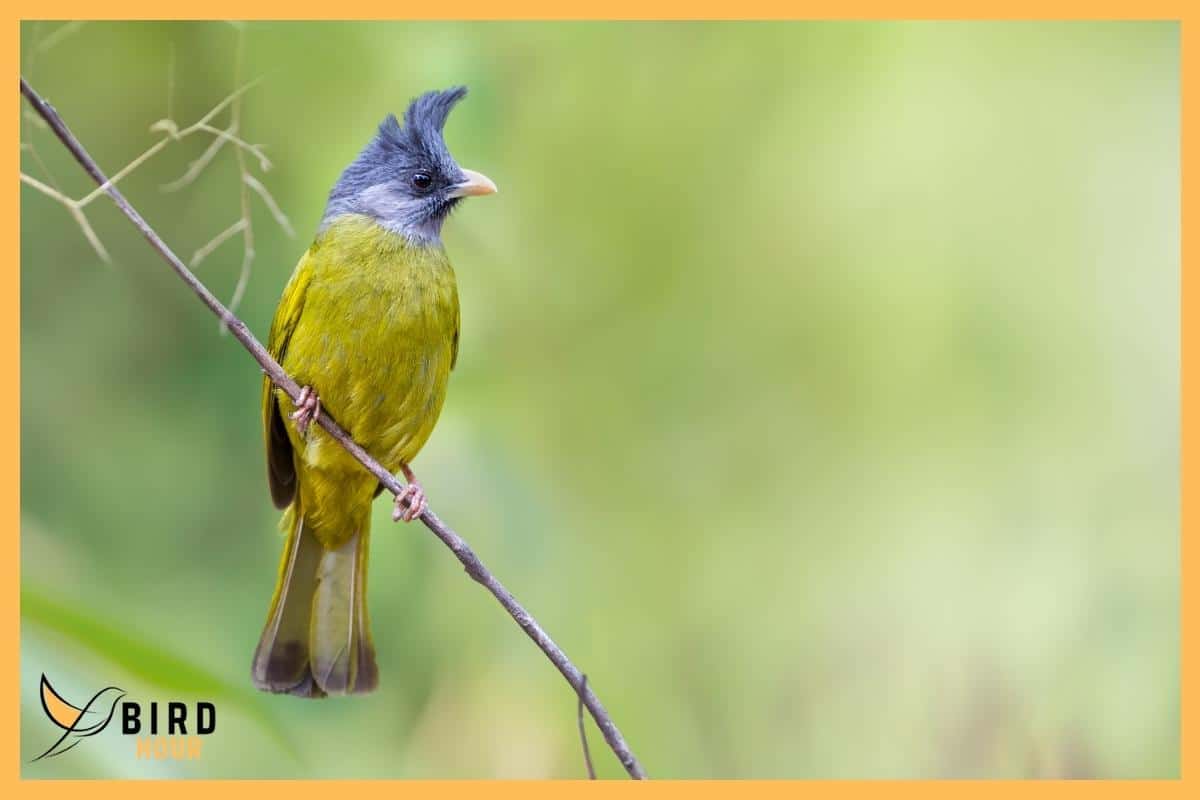Quick Answer:
Mothballs are not recommended as a bird repellent as they can be toxic to birds and other animals. Mothballs contain naphthalene or paradichlorobenzene, which can cause respiratory problems, liver damage, and other health issues in birds.
Have you ever been frustrated by birds taking over your garden or outdoor space? If so, you’re not alone! Birds can be a nuisance with their constant chirping and messes. But fear not – there is an age-old solution that many people swear by: mothballs. Is it true that mothballs keep birds away? In this article, we’ll take a closer look at the evidence to answer this question once and for all.
I remember hearing stories from my grandparents about how they used to hang up mothballs in their garden to deter birds when I was growing up. They were always confident that it worked like a charm, but I wanted to know if there really was any truth behind it. Does using mothballs actually have an effect on bird behavior or is it just an old wives’ tale? After doing some research on the topic, I’m here to share what I’ve discovered.
In order to get the full picture of whether or not mothballs are effective at keeping birds away, let’s explore the scientific evidence as well as personal experiences of those who have tried using them in their gardens. We’ll also discuss alternative methods for discouraging unwanted feathered visitors from invading your space. Let’s dive into finding out if mothballs really do work for keeping birds away!
Definition Of Mothballs
Mothballs are so powerful they could send a bird soaring to the moon! But what exactly are mothballs? To answer this, let’s first explore what mothballs actually are. Mothballs are small balls of chemical insect repellants that can be used in homes and gardens to keep moths away from fabrics. They come in either solid or liquid form depending on their intended use.
Their main active ingredient is typically naphthalene or paradichlorobenzene which gives them their distinctive odour – although there are now alternative scents available such as cedar. The concentration of these chemicals makes them highly effective at deterring moths, but also potentially dangerous for humans and other animals if inhaled over long periods of time or ingested accidentally. Now that we have an understanding of what mothballs are and how they work, it’s time to look at the potential benefits they offer when used correctly.
Benefits Of Using Mothballs
Mothballs offer several benefits for keeping birds away. For starters, they are easy to use and can be placed in any location where birds are a problem. Mothball usage is also cost-effective, since the balls are relatively inexpensive and don’t require ongoing maintenance or repair costs. Additionally, mothballs have been proven to be effective at deterring birds because of their strong smell and taste that most species find unpleasant.
One of the major advantages of using mothballs is that they don’t harm humans or wildlife. The active ingredient in them has a low toxicity level which means it won’t cause any health risks, even when used regularly around areas frequented by people or animals. Furthermore, there’s no risk of damaging property like walls or furniture from applying this type of bird deterrent as well.
Overall, while there are some disadvantages to using mothballs such as their pungent odor and potential environmental pollution, these can be minimized with proper storage and application techniques. When weighing the pros and cons, many homeowners find that the benefits significantly outweigh any downsides associated with mothball usage. With this in mind, it appears that using mothballs could be an ideal solution for those looking to keep birds away without risking harm to other living creatures.
From here we will move on to discussing the drawbacks of using mothballs as a bird deterrent…
Disadvantages Of Using Mothballs
As the sun sets on using mothballs as a means of keeping birds away, it is time to consider the drawbacks of this practice. While it may seem like an easy and effective solution at first glance, there are numerous health risks and environmental damage associated with employing this method that cannot be overlooked. To begin with, mothball toxicity can have serious consequences if inhaled or ingested by humans, pets, or wildlife. Furthermore, not only do they pose a clear risk to human health but their unpleasant odor has been known to linger for extended periods of time making them difficult to use in enclosed spaces. Finally, due to legal restrictions surrounding the usage of many pesticides containing naphthalene (the active ingredient found in most mothballs), employing this strategy could result in fines or other repercussions from local authorities.
Having taken into account the potential downsides of utilizing mothballs to keep birds away, it is important to explore alternatives before deciding on a course of action.
Alternatives To Mothballs
If you’re looking for a way to keep birds away without using mothballs, there are many alternatives. Natural predators like owls and hawks can be used as a bird repellent. You can also use physical deterrents such as bird spikes or netting to block the birds from roosting in certain areas. There’s also ultrasonic sound devices that emit high-frequency sounds designed to scare away birds. And visual deterrents such as plastic snakes or other fake predators can help too. All of these options have their own advantages, so it’s important to choose what works best for your particular situation. Moving on, there are still safety considerations when using any kind of pest control product – even if it’s only an alternative to mothballs.
How To Use Mothballs Safely
Mothballs are often used to keep birds away from gardens, but it’s important to remember that they can also be dangerous if not used correctly. Here is how you can use mothballs safely:
- Understand the safety precautions around using them correctly and take note of any warnings or advice given on the packaging.
- Make sure that the correct application method is followed when placing the mothballs in your garden. This includes making sure they’re placed at least 2-3 feet away from windows or doors so as not to cause an inhalation hazard.
- Store them properly in a sealed container, away from children and pets.
When using mothballs, it’s important to think about long-term effects on wildlife as well as humans. The chemicals in mothballs can have adverse impacts on plants and animals over time, particularly if they are disposed of incorrectly. Therefore, it’s vital that you follow all instructions carefully and store them securely when not in use. By doing this, you will ensure safe usage of these products for yourself and others who may come into contact with them.
Long-Term Effects On Wildlife
Mothball toxicity poses a serious threat to wildlife safety. The long-term effects of mothballs on animals, including birds, can be significant when they are exposed to them in any form or concentration. While using mothballs as a bird repellent may seem like an effective solution at first glance, their use carries the risk of harming other forms of wildlife.
When it comes to keeping birds away from your property, there are more humane and less hazardous ways than using mothballs for this purpose. There are many natural solutions such as scarecrows and predator decoys that you can use instead which won’t have harmful side effects for other species of animals or plants. Additionally, some commercial products exist specifically designed to keep birds away without putting other wildlife at risk.
At the end of the day, if you decide to use mothballs for pest control purposes, make sure you do so with caution and only in an outdoor area where no other forms of wildlife can come into contact with them directly or indirectly through runoff or vaporization. Be aware that even though these chemicals may act as a short-term deterrent against bird pests, prolonged exposure should not be tolerated due to its potential hazard.
Conclusion
It’s an age-old question: Do mothballs keep birds away? The answer is not as simple as a yes or no. Mothballs have their benefits and drawbacks, and it’s important to understand both before making the decision of whether or not to use them. Although they may be effective in deterring birds from nesting on your property, there are also potential dangers associated with using them. Alternatives such as bird spikes and netting provide better long term solutions that don’t come with any of the risks that utilizing mothballs does. As the saying goes, “An ounce of prevention is worth a pound of cure”, so make sure you’re fully informed about all your options before making a decision for keeping birds away from your home!
Overall, when deciding if mothballs should be used to keep birds away from one’s home, it’s important to remember that while they may be an option in some cases, they do carry risks. It’s best to consider alternatives like bird spikes and netting first before resorting to potentially harmful methods like using mothballs around one’s property. Taking preventative measures can save time, money, and effort down the road – something we could all benefit from!

I am Bryan Powell and I own BirdHour.com. I love bird watching; in fact, I have a parakeet of my own. I enjoy spending time outdoors and observing the natural world around me. This website is a means of sharing my passion for birds with others who may be interested in this activity. Learn more about Bryan by viewing his full Author Profile.

